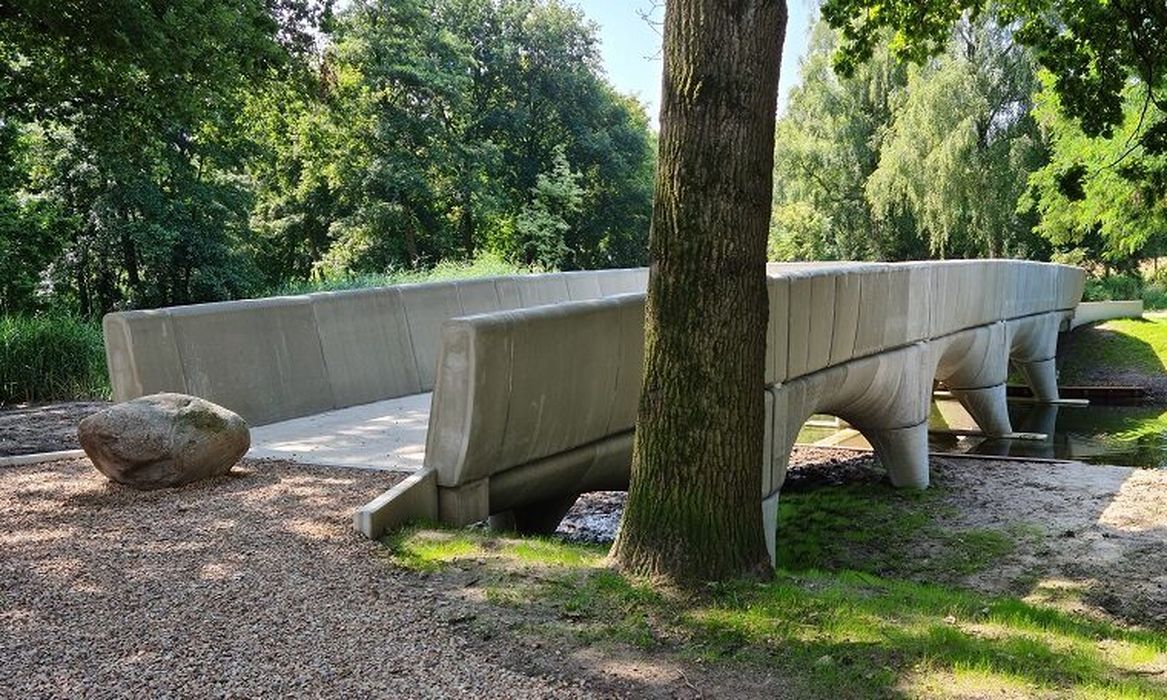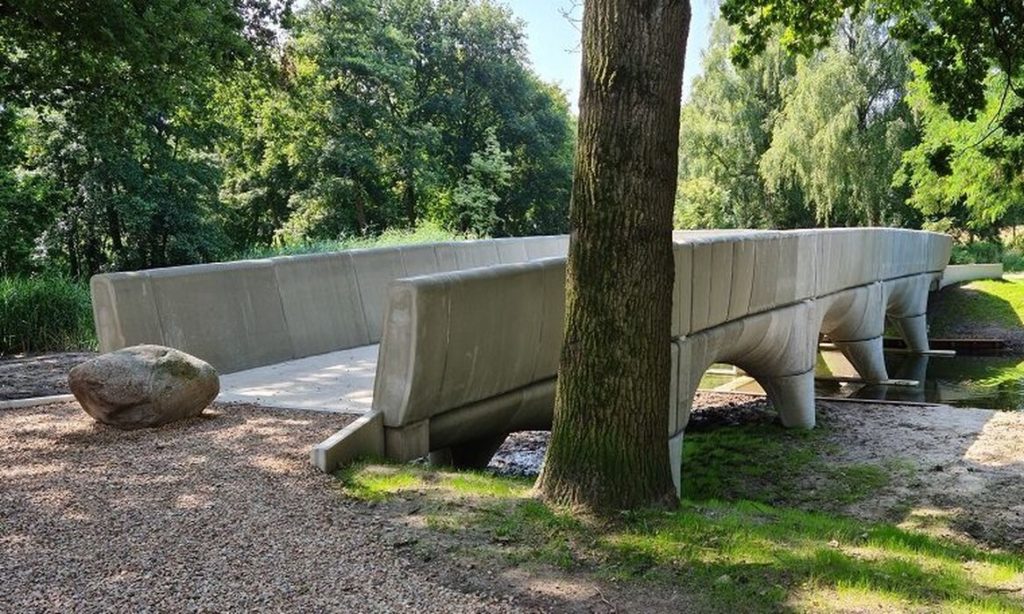
A large concrete bridge has been successfully 3D printed in the Dutch city of Nijmegen.
The 29m span was recently opened to the public, and now carries bike traffic in Nijmegen. It’s somehow not surprising that this achievement occurred in The Netherlands, a country that has more bikes than people.
The project was launched by Rijkswaterstaat, the Directorate-General for Public Works and Water Management in the region, who engaged Dutch designer Michiel van Der Kley on the bridge design, and leveraged research at TUE.
Physically, the work was completed by the construction group BAM, who worked with Saint Gobain Weber Beamix, who operate a concrete construction printing workshop.
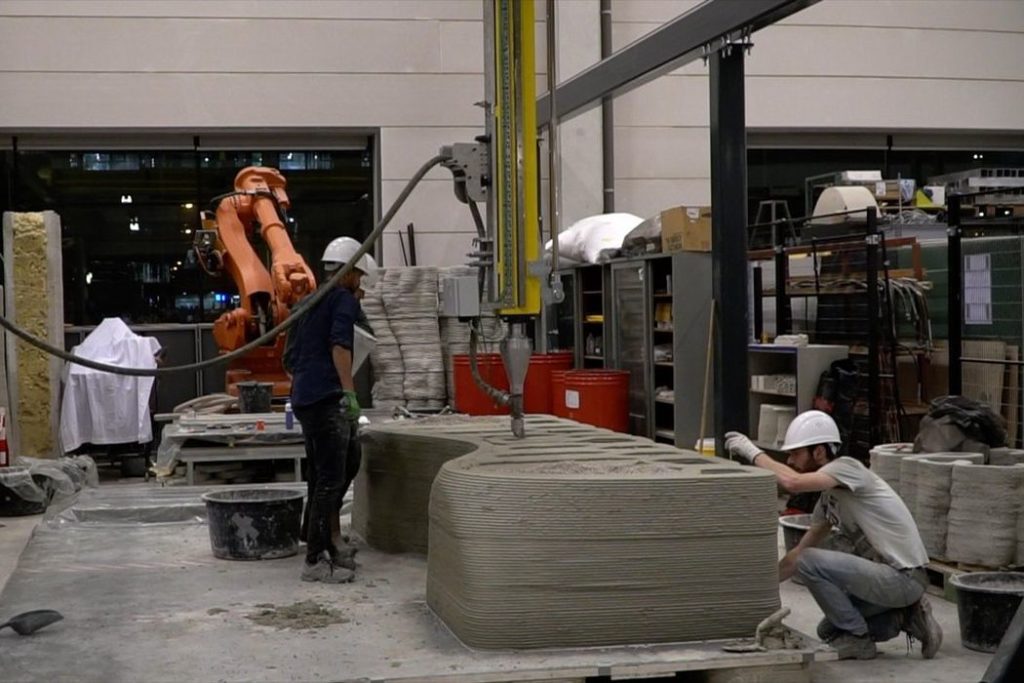
The approach used for this project was to segment the bridge into smaller pieces, which were individually 3D printed at the SGW workshop. Each piece was then shipped to the site, where they were assembled into the final structure.
This approach is different than an in-situ 3D print, where the printer would have to be relocated to the site during printing. That approach might work for a building, but this is a bridge, and one that crosses water. It’s not likely 3D printed bridges will ever be built on site.
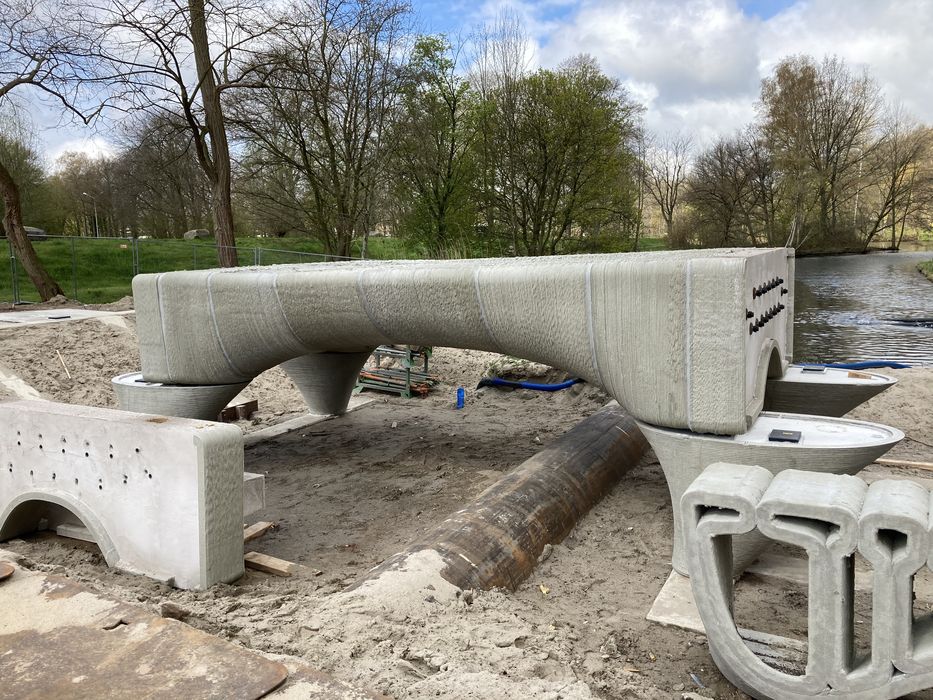
The segmentation approach required assembly but avoided relocation of equipment. By keeping the piece size reasonable, transport was made easier than if larger segments were used.
The design of the bridge is quite interesting because it fully leverages the freedom of design allowed by 3D printing. Traditional concrete bridges are subject to the geometry allowed by standard molding forms, but that was not the case on this project.
van Der Kley was able to design unusual curves throughout the structure, which would have been unimaginable if built using conventional approaches.
TUE explained the efficiency and sustainable aspects of the project:
“In theory, printed bridges can be built much faster than ordinary bridges, with more flexibility and more room for personalised designs. They are also more sustainable, as less concrete is needed. The ambition of the partners in this innovative project is for 3D concrete printing to eventually become a sustainable construction method that can be used for the production of bridges and houses, among other things.”
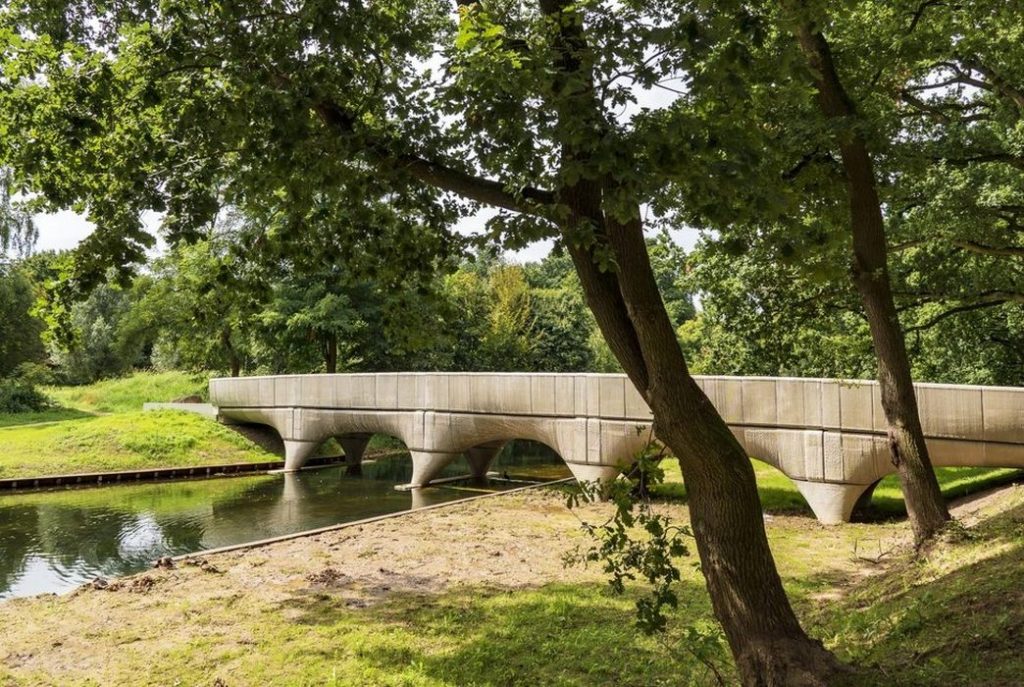
At a length of 29m, this is not a small project by any evaluation. Its size might be sufficient to provide a demonstration for others considering whether to 3D print a concrete bridge.
If the process is as efficient as claimed, then there’s now every reason to do so.
Via TUE and Saint Gobain Weber

